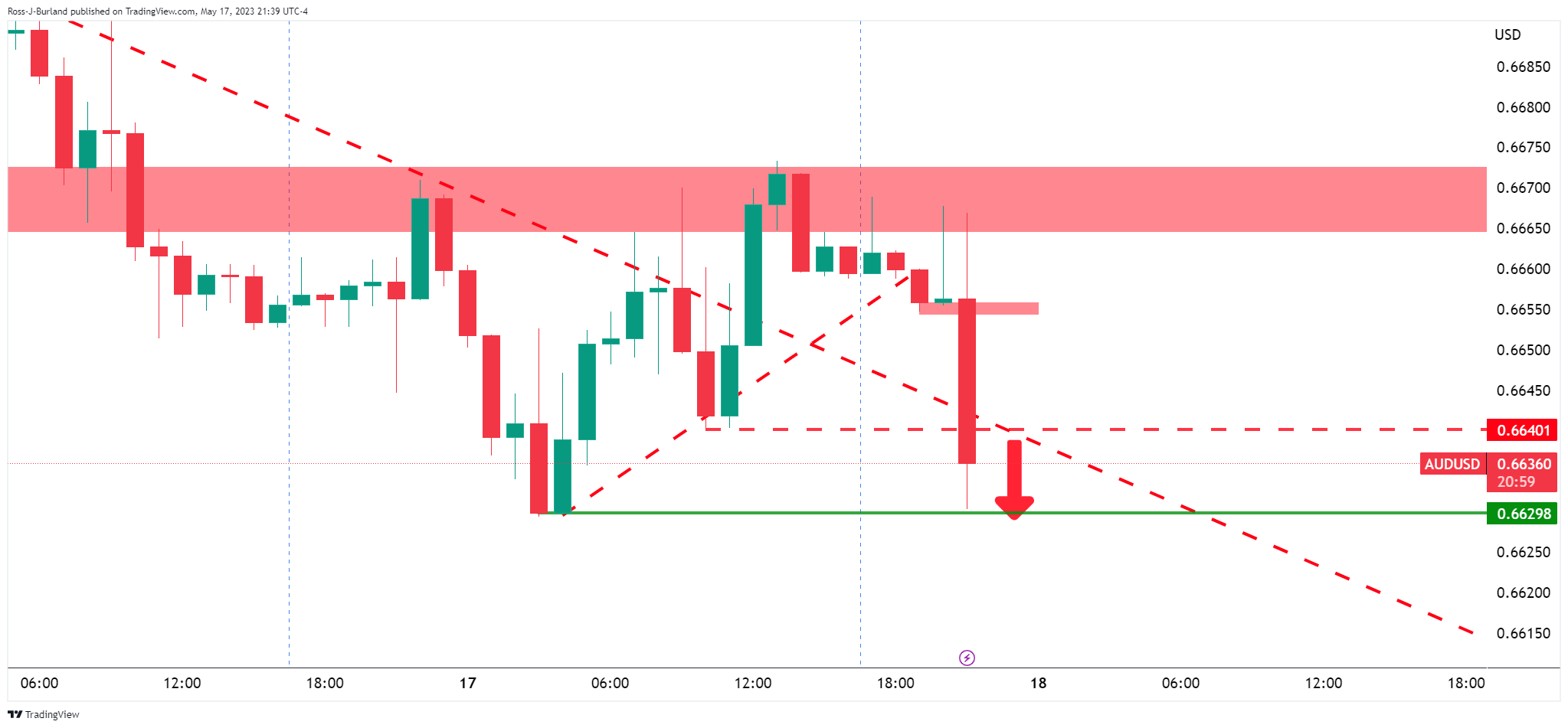- Breaking: Aussie Employment, -4.3K, below expectations (25K) in April
Notícias do Mercado
Breaking: Aussie Employment, -4.3K, below expectations (25K) in April
The Australian Employment report has been released as follows:
- Australia Employment Change s.a. came in at -4.3K, below expectations (25K) in April.
- Australia Unemployment Rate s.a. above expectations (3.5%) in April: Actual (3.7%).
- Australia Participation Rate in line with expectations (66.7%) in April.
- Australia Part-Time Employment: 22.8K (April) vs -19.2K.
- Australia Full-Time Employment down to -27.1K in April from previous 72.2K.
´´Australia Employment Unexpectedly dipped in April, following two months of outsized gains, while the jobless rate also ticked up, in a sign that the red-hot labour market might be cooling,´´ Reuters reported, adding:
´´Figures from the Australian Bureau of Statistics showed net employment fell 4,300 in April from March, when they rebounded by a revised 61,100. Market forecasts had been for a rise of 25,000.´´
This goes into the hands of the doves at the Reserve Bank of Australia and is a weight on AUD-USD as follows:
AUD/USD update
AUD/SD has dropped heavily on the release as follows:

The data has nullified the bullish bias that had otherwise started to form on the charts:


As illustrated, the price is now coming back inside of the bearish trend and a break of the 0.6620s could be on the cards.
About Aussie Employment Change
The Employment Change released by the Australian Bureau of Statistics is a measure of the change in the number of employed people in Australia. Generally speaking, a rise in this indicator has positive implications for consumer spending which stimulates economic growth. Therefore, a high reading is seen as positive (or bullish) for the AUD, while a low reading is seen as negative (or bearish).